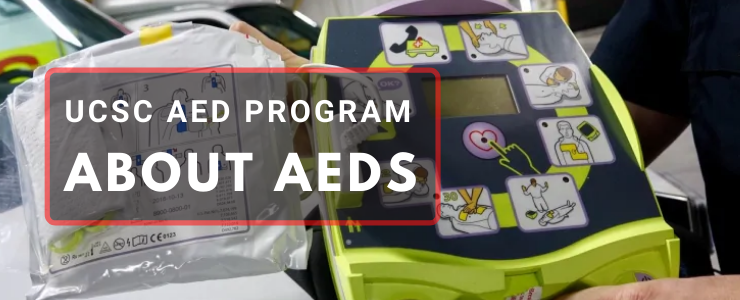AEDs Defined
An Automated External Defibrillator is first and foremost a medical device. AEDs have evolved over recent years to improve accessibility and lower the expertise threshold to use them properly. They have also become increasingly prevalent in public places.
An AED, or automated external defibrillator, is used to help those experiencing sudden cardiac arrest. It's a sophisticated, yet easy-to-use, medical device that can analyze the heart's rhythm and, if necessary, deliver an electrical shock, or defibrillation, to help the heart re-establish an effective rhythm.
- American Red Cross
Sudden Cardiac Arrest
Sudden cardiac arrest is a leading cause of death in the United States and is experienced by over 350,000 people a year. According to heart.org, the survival rate of Sudden Cardiac Arrest is under 12%, but that can be doubled through the use of cardiopulmonary resuscitation (CPR) and AEDs.
Sudden cardiac arrest is defined by the Mayo Clinic as the abrupt loss of heart function, breathing, and consciousness. The leading cause of sudden cardiac arrest is coronary heart disease, where the arteries responsible for blood flow to the heart become clogged with cholesterol. Risk factors for coronary heart disease include smoking, high blood pressure, high blood cholesterol, obesity, diabetes, and an inactive lifestyle. Other factors may include a family history of heart problems or previous heart attacks.
When a sudden cardiac arrest occurs, your heart's normal electrical system dramatically malfunctions. This malfunction causes a change in your heart's rate and rhythm. Since the heart is responsible for pumping blood to all corners of your body, this malfunction can quickly become lethal.
Arrhythmia, Fibrillation, and AEDs
The term used to describe the heart's condition during a sudden cardiac arrest is arrhythmia, derived from the Greek aruthmia (without rhythm). Since the heart is an inherently electrical system, it stands that an outside source of electricity may impact the heart's electrical system.
Your heart is comprised of four chambers, the top chambers are called atria and the bottom chambers are called ventricles. During normal operation, the heart pumps blood evenly through these chambers.
The most common form of arrhythmia is called ventricular fibrillation or V-fib. Fibrillation occurs when your heart muscles quiver instead of pump, normally due to issues with the electrical impulses telling your heart muscles what to do. In fact, this is where the 'fibrillator' comes from in Automated External Defibrillator. The goal of the AED is to 'shock' your heart into having the chambers pump instead of quiver.
AEDs and CPR
Using an Automated External Defibrillator (AED) and Cardiopulmonary Resuscitation (CPR) in tandem is the most effective strategy to increase a victim's odds of survival. These practices attempt to accomplish different goals, both aimed at the victim's survival. Specifically:
- CPR attempts to emulate the function of the heart by compressing the chest, pumping blood through the victim's body.
- AEDs attempt to restore the function of the heart by correcting the electrical impulses that have led to sudden cardiac arrest in the first place.
AEDs include two electrode pads that are placed in specific positions on a victim's chest. These positions create an electrical pathway with the heart at the center. When the AED delivers a shock, the electrical rhythms of the heart are affected. Ideally, this will 'reset' the electrical impulses of the heart and force the chamber of the heart to pump instead of quiver.
It should be noted that it may take multiple shocks for an AED to successfully 'reset' these electrical impulses, or an AED may be unable to reset the rhythm regardless. When electrodes are connected to a victim's chest, the AED will analyze the victim's heart rhythm to determine if it is 'shockable.' If the rhythm is not 'shockable,' the only way to help a patient until professional help arrives is CPR.
CPR is the process of performing compressions (and rescue breaths, if trained to do so) on a victim. Compressions function to pump the blood around the body. CPR instructions generally state to give compressions at a rate of 100 to 120 per minute.


